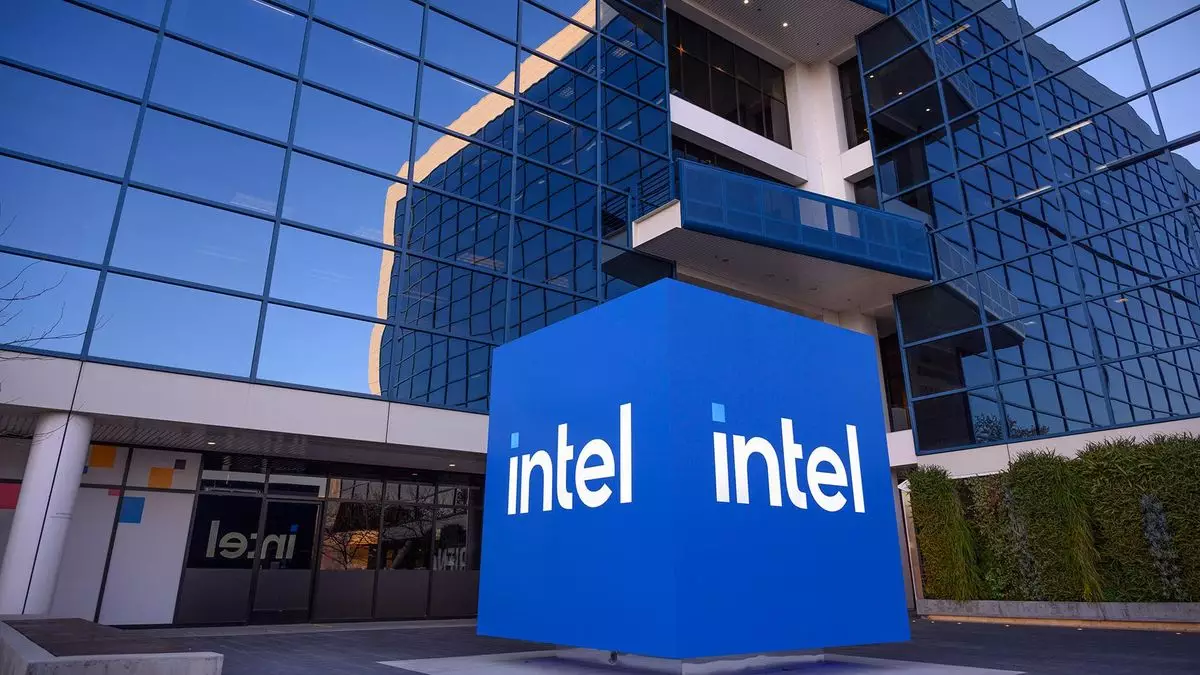For a quarter-century, Intel has stood tall as a cornerstone of the semiconductor industry, symbolizing technological prowess and market strength. As one of the few corporations listed on the prestigious Dow Jones Industrial Average, its performance has historically served as a reliable indicator of the overall health of the semiconductor sector. However, the recent downturn in Intel’s fortunes is not just a blip on the corporate radar; it signifies deeper issues within the company and the industry at large. The recent decision by S&P Dow Jones to remove Intel from its index, replacing it with the ascendant Nvidia—a company that has thrived amidst the AI boom—underscores the magnitude of Intel’s struggles.
The Financial Downturn: A Deep Analysis
The current state of Intel’s finances is stark. At present, its share price sits at approximately $23, a staggering decline from the prior year when it was nearly double that figure. Quarter after quarter, the company has reported net income losses, culminating in projections of up to $20 billion in losses by year-end. Such dismal statistics make it unsurprising that investors are losing faith. Though revenues have shown slight improvement compared to the previous year, they fall short of expectations, leaving a considerable gap between performance and market demands. The company’s struggle to innovate effectively and meet the evolving needs of consumers has led to these disappointing financial statements.
Intel’s diminishing market position has triggered significant operational changes. In an effort to curb financial losses, the semiconductor giant has laid off 15% of its employees, a move that speaks to both the urgency of the situation and the gravity of the challenges ahead. Furthermore, the reception for its latest products, particularly the Arrow Lake processors, has been tepid at best, especially within the gaming community. Rising competition from AMD and Nvidia has compounded these issues, resulting in lower revenue in critical sectors like data centers and artificial intelligence.
While the company’s ambitious initiatives to enhance its manufacturing capabilities show promise, the reliance on external manufacturers such as TSMC hints at a deeper vulnerability. Intel’s pursuit of technological reinvention is vital, yet the reality remains that it now finds itself trailing behind competitors who have successfully capitalized on innovative trends, specifically in AI and next-generation gaming technologies.
Hope on the Horizon: Potential Recovery Strategies
Despite these ominous clouds hanging over Intel, it’s essential to recognize that the situation is far from hopeless. The company is not solely dependent on consumer markets; it remains a crucial contractor for the U.S. military, which ensures a steady inflow of funds. Moreover, Intel stands to benefit from the CHIPS and Science Act, legislation designed to bolster the domestic semiconductor industry. This focus on government contracts provides a crucial lifeline amid its present struggles.
Furthermore, Intel maintains a commanding presence within the Central Processing Unit (CPU) client sector. The market share is significant and cannot be overlooked. However, the challenge lies in managing expenditures against the backdrop of shrinking revenue streams. This entails making concerted efforts to optimize operations through restructuring, closing unprofitable divisions, and redirecting costs towards innovation.
Intel’s plight is set against a dynamic and rapidly evolving landscape in the semiconductor market. The emergence of competitors like AMD illustrates that recovery is possible, albeit fraught with challenges. AMD’s ability to rebound from previous setbacks offers a glimmer of hope for Intel, but it must adapt to changes that are significantly different from those of 16 years ago, when the landscape was less competitive.
The takeaway for both Intel and its investors is that the road ahead requires a strategic reassessment, a renewed focus on innovation, and perhaps most critically, a reevaluation of its operational priorities. The stakes are high, and while Intel may have stumbled, its legacy and potential for recovery remain a subject of keen interest in the world of technology. As the semiconductor landscape continues to shift, the industry will be watching closely, hopeful that Intel can reclaim its former glory while navigating through these turbulent waters.


Leave a Reply